Wait - I just realized you're the same Tommy4Ever who served as the reporter in the "Democracy's Last Legs". Must follow  .
.
Austriae est imperare orbi universo - a Habsburg AAR
- Thread starter Tommy4ever
- Start date
-
We have updated our Community Code of Conduct. Please read through the new rules for the forum that are an integral part of Paradox Interactive’s User Agreement.
You are using an out of date browser. It may not display this or other websites correctly.
You should upgrade or use an alternative browser.
You should upgrade or use an alternative browser.
You should do an about face on the religion issue. The Historical Habsburgs could quite accurately be described as more Catholic then the Pope. Franz should be the uber Catholic who starts a personal crusade to eradicate Protestantism
You should do an about face on the religion issue. The Historical Habsburgs could quite accurately be described as more Catholic then the Pope. Franz should be the uber Catholic who starts a personal crusade to eradicate Protestantism
This.
Franz I, the Weak (Part 1)
Lived: 1496-1550
Head of House of Habsburg: 1518-1550
Holy Roman Emperor: 1518-1550
Archduke of Austria: 1518-1550
King of Bohemia: 1518-1550
Duke of Lombardy and Brunswick: 1518-1550
Duke of Thuringia: 1520-1550

Franz is quite possibly the weakest willed Emperor the Habsburg dynasty ever produced. Bullied and manipulated throughout his reign Franz was powerless in the face of the ‘Glorious Revolution’ and simply allowed the Protestants to run amok, changing Austria forever and plunging her into Civil War during the Rule of the Saints. Franz’s reign is remembered as the ultimate triumph that saved the Reformation by Protestants and as a time of shame and anguish by Catholics.

Franz faced major opposition immediately after his grandfather’s death in his attempts to be named the Duke of Brunswick. The 73 year old Pope Julius II sent Franz a simple message: if he was crowned Duke in a Protestant ceremony then he would be excommunicated. Initially Franz requested that the nobles of Brunswick allow his investiture in a Catholic ceremony but the nobles refused to budge. Franz, in a move typical of his rule, attempted to placate both parties and ended up enraging both of them instead. Franz had his investiture ceremony adjusted to try to make it less inflammatory to the Pope (a notable adjustment was the removal of the Emperor’s obligation to curse the Pope and all of his name). Unsurprisingly the Pope was not as thrilled with Franz’s adjustments as the Emperor had hoped he would be and subsequently informed him of his excommunication. Meanwhile the Brunswick nobility were left to feel resentful; a small group even rose up in rebellion although they quickly faced defeat.
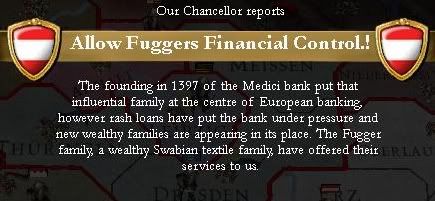
In 1519 a group of merchants came to the Emperor with the demand that he cede control of the Austrian National Bank to the Fuggers family. Although initially wary of giving up powers Franz was soon forced to accept the merchant’s proposals after they hinted that should the Fuggers not be given control of the bank they would move the centre of Danubian trade downstream to Hungarian Pressburg. This would be extremely damaging for Habsburg finances which greatly benefitted from the trade generated within Vienna. The move actually turned out to be a successful one as the Fuggers rejuvenated the banks administration and contributed to a rise in individual enterprise by loosening the restrictions on loans.
In 1520 the large Duchy of Thuringia, a long term Habsburg vassal, was absorbed into the domains of Franz I. Ever since the Duchy was defeated and made a vassal it had been ruled by a minor Habsburg line, however this line died out in 1520 and as such Franz seized the wealthy territory for the primary line.
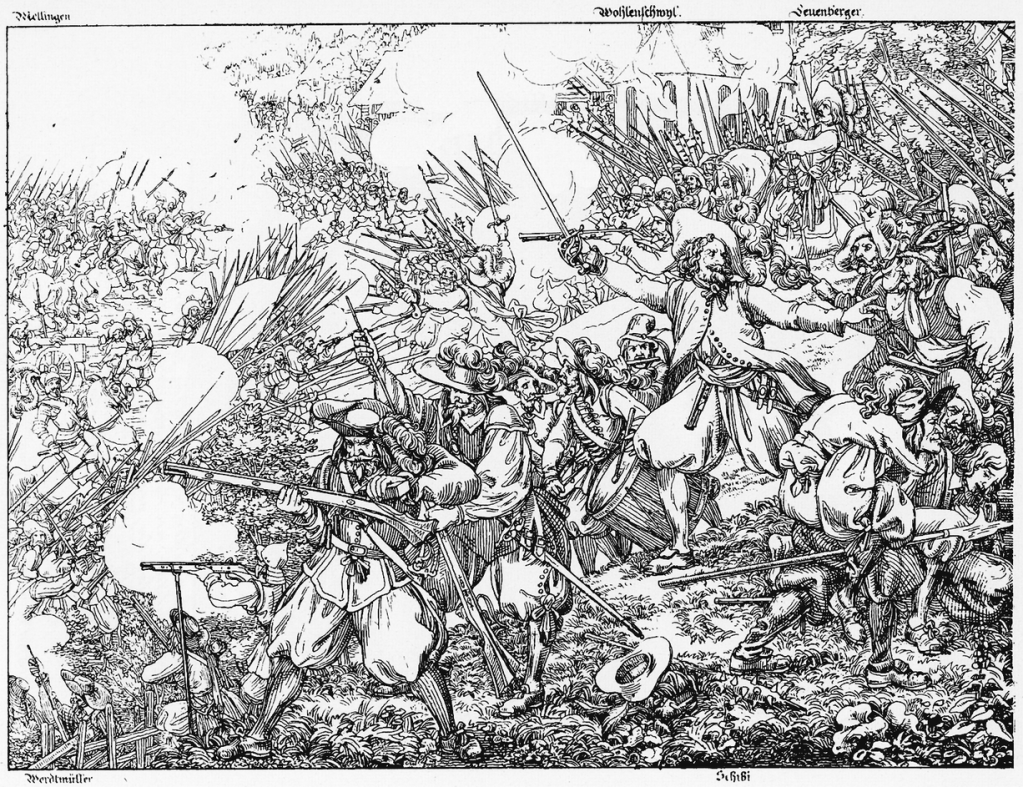
In 1522 Pope Julius II and was succeeded by Paul III. Paul took a harder line against the Reformation than his predecessor and was really the first Pope to fully embrace the Counter-Reformation. As he saw the Habsburgs start to drift away from the Papacy he elected to attack, unseat Franz and place a more devoutly Catholic Monarch on the throne. In 1523 he declared war alongside the Swiss Confederacy, Venice, Sweden and Portugal. The conflict lasted two years; the Pope’s allies provided only minimal assistance allowing Austria’s narrow numerical and qualitative advantage over the Pope’s armies to shine through. The majority of the Papacy’s armies were crushed in three separate battles in the border regions between Habsburg Lombardy and Papal Liguria. Following these victories the Austrian army marched all the way to the gates of Rome and beyond. Franz had no desire to sack Rome and instead ordered his army in the field to merely keep the city under siege. This tactic was a surprising success and after 6 months under siege the Pope agreed to surrender.

The Eastern half of the Swiss Confederacy alongside the trading city of Genoa were ceded to the Habsburg dynasty. Genoa in particular was extremely valuable. The Italian city cut journey times between Austria and the colonies greatly, ended the threat of the Pirate infested Adriatic to worldwide trade and provided a base for Austria’s merchants overseas to trade with.
Back in Vienna something altogether more macabre was brewing. Vienna was a divided city – the countryside around was entirely Catholic but within the city itself around 40% of the populace were Protestant and the rest were Catholic. But these Protestants were neither Reformed or Ossolinskite but something different. These Protestants followed a third branch of the Reformation known as Lutheranism. Martin Luther had been forced from his home in Saxony during the 1510s and from there had moved to Prague and then on to Vienna. Here his teaching became very popular and much of the city had converted.
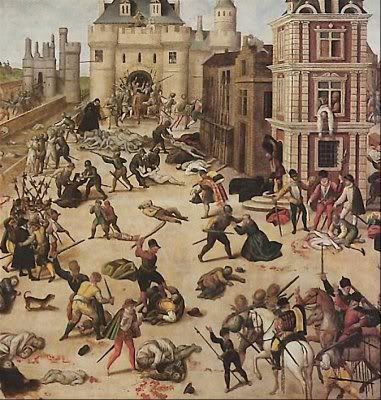
The division of Vienna left the city in a state of abject chaos. Every day gangs of Lutherans clashed with Catholics on the street, every day Priests who walked through the wrong streets were beaten to death, every day Protestant Churches were torched. The city seemed to be a microcosm of German society as a whole. Religion was ripping the greatest of German cities apart. In this situation the plotting began. The Protestant community yearned for power and planned for a spectacular coup d'état within the city.
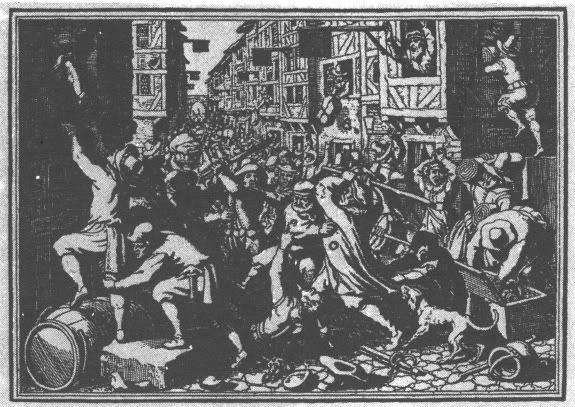
In the dead of night on May 1st 1528 around 2,000 well armed Protestant militiamen marched into the main district of Catholic housing in Vienna. At the same time hundreds of other militiamen seized key points around the city including St Stephen’s Cathedral. The city was effectively made secure for the rebels thanks to the betrayal of the Captain of the 4,000 strong city guard. The majority of the guard was Catholic, in response to this the Captain (Hermann Freud) had the religiously loyal members of the guard murder more than half of the guardsmen whilst they slept. The Protestant guardsmen then quickly moved to take control of the city’s vital cannon posts.
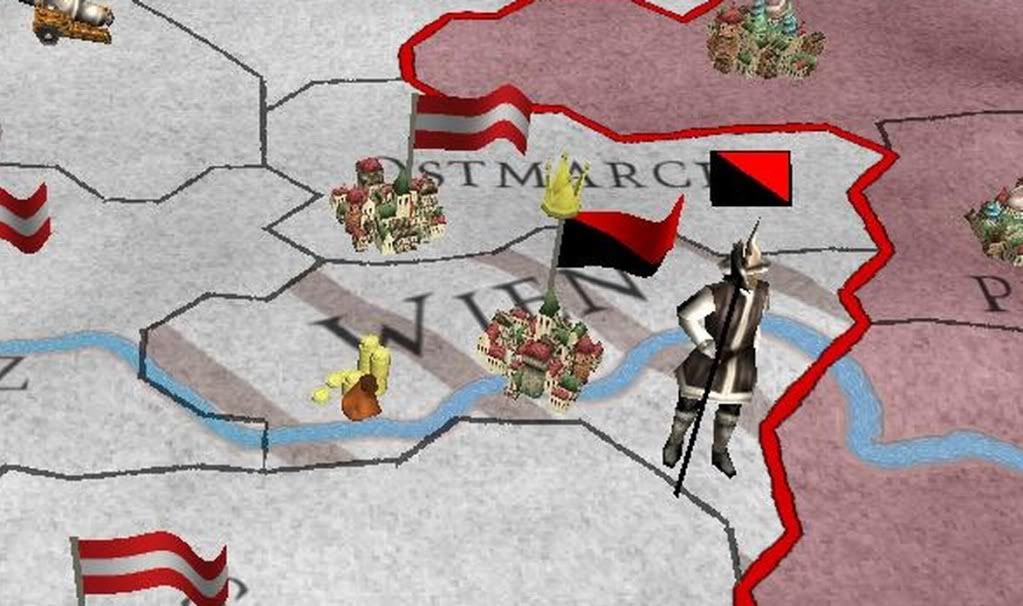
By the morning of May 2nd Vienna was under Protestant rule. However one key point in the city remained out of their hands – the Hofburg Imperial Palace. The Palace was under siege by Protestant militia but cannons around the Palace coupled with a large Palace guard had managed to keep the revolutionaries from entering the Emperor’s residence. The siege of the Hofburg continued for several days until May 7th.
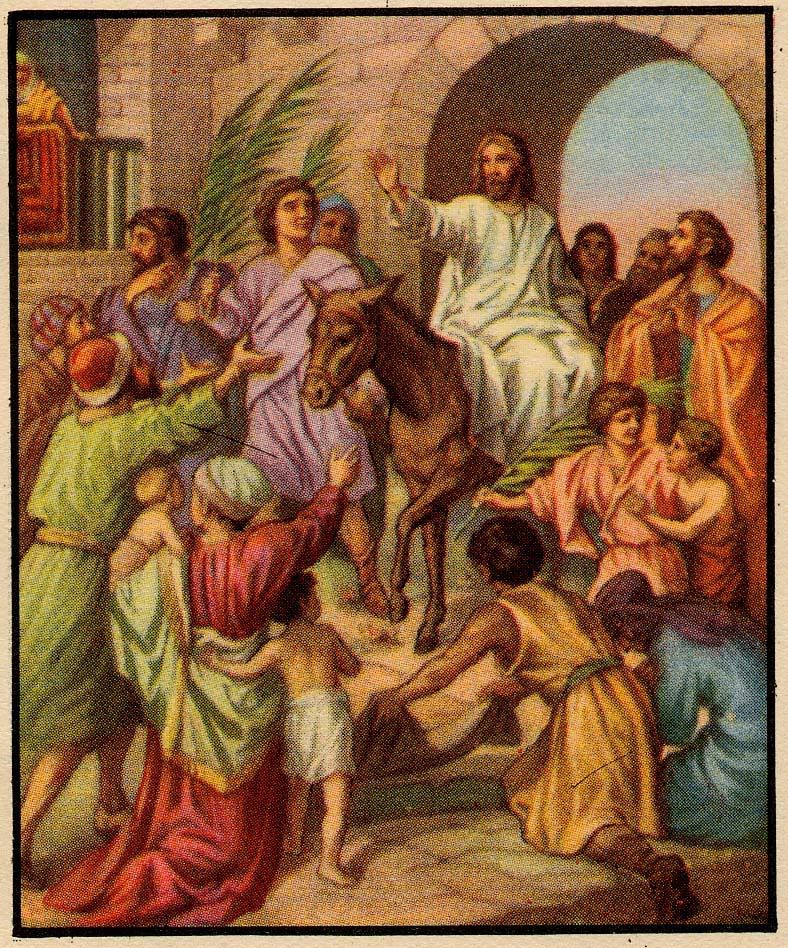
On May 7th Martin Luther, the Protestant Messiah, entered the city of Vienna to take charge of the self proclaimed ‘Glorious Revolution’. The 45 year old Luther was hailed by the revolutionaries as the man to create the New Jerusalem atop the rubble of the tired, corrupt and dying Church. The first move of the great Protestant Priest was to go to the Hofburg to negotiate with the Emperor. It remains unclear exactly what was said an agreed in the meeting between Luther and Emperor Franz on May 7th but the outcome was clear. For the rest of his life the Emperor was made a prisoner within his Palace, control of the Austrian government was transferred to Luther who ruled as an Emperor in all but name as he attempted to forge his New Jerusalem in the Habsburg realm.
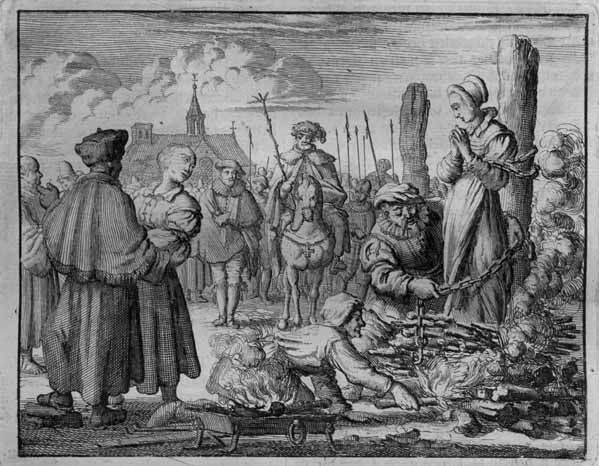
Despite having the Emperor under his direct control Luther’s power was in reality very weak. In order to gain support he needed the Protestant fanatics on his side and in order to secure their loyalty he handed over the responsibility for ensuring religious uniformity to the mob. The tyrannical Rule of the Saints had begun. Within the, at first small, territory controlled by Luther and the Glorious Revolution many thousands of Catholics were beaten to death, burned at the stake and robbed of their possessions. Vienna became and even worse place to be than before as armed Lutheran gangs roamed the streets attacking citizens at will.
Lived: 1496-1550
Head of House of Habsburg: 1518-1550
Holy Roman Emperor: 1518-1550
Archduke of Austria: 1518-1550
King of Bohemia: 1518-1550
Duke of Lombardy and Brunswick: 1518-1550
Duke of Thuringia: 1520-1550

Franz is quite possibly the weakest willed Emperor the Habsburg dynasty ever produced. Bullied and manipulated throughout his reign Franz was powerless in the face of the ‘Glorious Revolution’ and simply allowed the Protestants to run amok, changing Austria forever and plunging her into Civil War during the Rule of the Saints. Franz’s reign is remembered as the ultimate triumph that saved the Reformation by Protestants and as a time of shame and anguish by Catholics.

Franz faced major opposition immediately after his grandfather’s death in his attempts to be named the Duke of Brunswick. The 73 year old Pope Julius II sent Franz a simple message: if he was crowned Duke in a Protestant ceremony then he would be excommunicated. Initially Franz requested that the nobles of Brunswick allow his investiture in a Catholic ceremony but the nobles refused to budge. Franz, in a move typical of his rule, attempted to placate both parties and ended up enraging both of them instead. Franz had his investiture ceremony adjusted to try to make it less inflammatory to the Pope (a notable adjustment was the removal of the Emperor’s obligation to curse the Pope and all of his name). Unsurprisingly the Pope was not as thrilled with Franz’s adjustments as the Emperor had hoped he would be and subsequently informed him of his excommunication. Meanwhile the Brunswick nobility were left to feel resentful; a small group even rose up in rebellion although they quickly faced defeat.

In 1519 a group of merchants came to the Emperor with the demand that he cede control of the Austrian National Bank to the Fuggers family. Although initially wary of giving up powers Franz was soon forced to accept the merchant’s proposals after they hinted that should the Fuggers not be given control of the bank they would move the centre of Danubian trade downstream to Hungarian Pressburg. This would be extremely damaging for Habsburg finances which greatly benefitted from the trade generated within Vienna. The move actually turned out to be a successful one as the Fuggers rejuvenated the banks administration and contributed to a rise in individual enterprise by loosening the restrictions on loans.
In 1520 the large Duchy of Thuringia, a long term Habsburg vassal, was absorbed into the domains of Franz I. Ever since the Duchy was defeated and made a vassal it had been ruled by a minor Habsburg line, however this line died out in 1520 and as such Franz seized the wealthy territory for the primary line.

In 1522 Pope Julius II and was succeeded by Paul III. Paul took a harder line against the Reformation than his predecessor and was really the first Pope to fully embrace the Counter-Reformation. As he saw the Habsburgs start to drift away from the Papacy he elected to attack, unseat Franz and place a more devoutly Catholic Monarch on the throne. In 1523 he declared war alongside the Swiss Confederacy, Venice, Sweden and Portugal. The conflict lasted two years; the Pope’s allies provided only minimal assistance allowing Austria’s narrow numerical and qualitative advantage over the Pope’s armies to shine through. The majority of the Papacy’s armies were crushed in three separate battles in the border regions between Habsburg Lombardy and Papal Liguria. Following these victories the Austrian army marched all the way to the gates of Rome and beyond. Franz had no desire to sack Rome and instead ordered his army in the field to merely keep the city under siege. This tactic was a surprising success and after 6 months under siege the Pope agreed to surrender.

The Eastern half of the Swiss Confederacy alongside the trading city of Genoa were ceded to the Habsburg dynasty. Genoa in particular was extremely valuable. The Italian city cut journey times between Austria and the colonies greatly, ended the threat of the Pirate infested Adriatic to worldwide trade and provided a base for Austria’s merchants overseas to trade with.
Back in Vienna something altogether more macabre was brewing. Vienna was a divided city – the countryside around was entirely Catholic but within the city itself around 40% of the populace were Protestant and the rest were Catholic. But these Protestants were neither Reformed or Ossolinskite but something different. These Protestants followed a third branch of the Reformation known as Lutheranism. Martin Luther had been forced from his home in Saxony during the 1510s and from there had moved to Prague and then on to Vienna. Here his teaching became very popular and much of the city had converted.

The division of Vienna left the city in a state of abject chaos. Every day gangs of Lutherans clashed with Catholics on the street, every day Priests who walked through the wrong streets were beaten to death, every day Protestant Churches were torched. The city seemed to be a microcosm of German society as a whole. Religion was ripping the greatest of German cities apart. In this situation the plotting began. The Protestant community yearned for power and planned for a spectacular coup d'état within the city.

In the dead of night on May 1st 1528 around 2,000 well armed Protestant militiamen marched into the main district of Catholic housing in Vienna. At the same time hundreds of other militiamen seized key points around the city including St Stephen’s Cathedral. The city was effectively made secure for the rebels thanks to the betrayal of the Captain of the 4,000 strong city guard. The majority of the guard was Catholic, in response to this the Captain (Hermann Freud) had the religiously loyal members of the guard murder more than half of the guardsmen whilst they slept. The Protestant guardsmen then quickly moved to take control of the city’s vital cannon posts.

By the morning of May 2nd Vienna was under Protestant rule. However one key point in the city remained out of their hands – the Hofburg Imperial Palace. The Palace was under siege by Protestant militia but cannons around the Palace coupled with a large Palace guard had managed to keep the revolutionaries from entering the Emperor’s residence. The siege of the Hofburg continued for several days until May 7th.

On May 7th Martin Luther, the Protestant Messiah, entered the city of Vienna to take charge of the self proclaimed ‘Glorious Revolution’. The 45 year old Luther was hailed by the revolutionaries as the man to create the New Jerusalem atop the rubble of the tired, corrupt and dying Church. The first move of the great Protestant Priest was to go to the Hofburg to negotiate with the Emperor. It remains unclear exactly what was said an agreed in the meeting between Luther and Emperor Franz on May 7th but the outcome was clear. For the rest of his life the Emperor was made a prisoner within his Palace, control of the Austrian government was transferred to Luther who ruled as an Emperor in all but name as he attempted to forge his New Jerusalem in the Habsburg realm.

Despite having the Emperor under his direct control Luther’s power was in reality very weak. In order to gain support he needed the Protestant fanatics on his side and in order to secure their loyalty he handed over the responsibility for ensuring religious uniformity to the mob. The tyrannical Rule of the Saints had begun. Within the, at first small, territory controlled by Luther and the Glorious Revolution many thousands of Catholics were beaten to death, burned at the stake and robbed of their possessions. Vienna became and even worse place to be than before as armed Lutheran gangs roamed the streets attacking citizens at will.
Last edited:
How many churches did Wien have in reserve if churches were burnt daily? 
Wait, you force converted?
Wait, you force converted?
How many churches did Wien have in reserve if churches were burnt daily?
Wait, you force converted?
The burning churches was an example of things that happened
I don't get force converted - you'll have to see the next update but there shall be civil wars etc, a centralisation under the Lutherans / Puppet Emperor and the Pope will get involved again.
Civil War, the most uncivil of wars especially with the family orientated habsburg. There should be plenty of claimants and general riff raff emerge to contest Luther the dark lord of the sith gaining power.
If you did convert, that would be very ahistorical. I think that Luther's reign should go down in smoke and Franz's successor should be so outraged that he should go on personal crusade against the Protestants for the simple fact that that is what would most likely happen after a reign such as that
If you did convert, that would be very ahistorical. I think that Luther's reign should go down in smoke and Franz's successor should be so outraged that he should go on personal crusade against the Protestants for the simple fact that that is what would most likely happen after a reign such as that
But Franz's successor is merely a child. A child being raised in the Hofburg - the centre of Luther's domain. I know in OT the Habsburgs wouldn't stand for this. But in OT the Emperor during the Reformation was Charles V who was very strong, Franz is very weak. Also Austria's entire hierarchy would be turned Lutheran with most Catholic elements purged in the Civil War. I will tell you that after Luther the Emperors will fight back and the New Jerusalem, dominated by Luther and his closest supporters, will come crashing down but by then most of the country, aristocracy and most importantly Habsburg dynasty will by Lutheran.
But Franz's successor is merely a child. A child being raised in the Hofburg - the centre of Luther's domain. I know in OT the Habsburgs wouldn't stand for this. But in OT the Emperor during the Reformation was Charles V who was very strong, Franz is very weak. Also Austria's entire hierarchy would be turned Lutheran with most Catholic elements purged in the Civil War. I will tell you that after Luther the Emperors will fight back and the New Jerusalem, dominated by Luther and his closest supporters, will come crashing down but by then most of the country, aristocracy and most importantly Habsburg dynasty will by Lutheran.
Forgot he was a child. However, it is still possible for him to be pissed at Luther for what he has done to his father and then lash out. I am not saying you should do this, I am simply putting it forward as a suggestion, not to mention that Luther does not yet have complete control of the empire, at least I think that is what you said.
Totally fascinating! I can't wait to see what happens with Luther, the Emperor, the rule of the Saints, and what the Pope manages to do! Very exciting, and it follows the characters of your Archdukes/Emperors really well! Thanks! 
Lessee...two excommunicated emperors, and Vienna taken by Lutherans. I think we left the OTL behind a very long time ago. These Habsburgs are not guaranteed (and indeed not likely at all) to behave like those from our world.
Nicely done, Tommy! I'm enjoying the writeups.
Nicely done, Tommy! I'm enjoying the writeups.
It will be interesting to see how this works. A mostly Catholic Holy Roman Empire ruled by what is fast becoming a Protestant Emperor who is diametrically opposed to the Pope. Have fun trying to keep the imperial throne and avoid having war declared on you every weak by the Pope and who-knows-who-else in Catholicism
I wish I had discovered this AAR earlier, but I'm glad that I did at least find it. I really like the history book style. Luther in charge of Vienna; that's something I've never seen before.
Franz I, the Weak (Part 2)
Lived: 1496-1550
Head of House of Habsburg: 1518-1550
Holy Roman Emperor: 1518-1550
Archduke of Austria: 1518-1550
King of Bohemia: 1518-1550
Duke of Lombardy and Brunswick: 1518-1550
Duke of Thuringia: 1520-1550
Immediately after the Revolution in Vienna the powerful Austrian army seemed to be dumbstruck. For several weeks after the orders from Vienna (drafted by Luther signed by the Emperor) started to stream out to the nation’s Generals nothing happened. No General wished to make a move for or against the Revolution out of the fear of placing themselves on the losing side. That was until Gustav von Coburg, Count of Meissen and commander of the most powerful single Austrian army (12,000 infantry and 3 artillery battalions), declared the Lutheran government illegitimate, heretical and illegal. With his impressive host Gustav then left the city of Prague, the city from where he had based a recent campaign to calm the Czechs, and began a march on Vienna.
Even at this stage the Lutheran government’s actual power extended for barely a few miles outside of Vienna and as such the thought of the outnumbered and outclassed government sending an army to meet General Gustav on the field was unthinkable. But this is what Luther ordered. All but abandoning the seat of Imperial power a rag tag Lutheran army under the command of the former Captain of the Vienna City Guard, Dietrich Neipigg, was sent Northward to face Gustav’s Catholic army.
In the short few days prior to the battle of Gmund the Lutherans proved extremely fortunate. Firstly Neipigg was able to force march his army to Gmund, a small village at the Bohemian-Austrian border, and set his army up in a good defensive position with days to spare as Gustav’s larger force dragged its way across Bohemia. Secondly, and most importantly, Gustav committed tactical suicide when he unwittingly marched his army into a deep bog. Fearing Lutheran attacks whilst his army was trapped in the bog he abandoned his artillery and proceeded towards the field of battle.
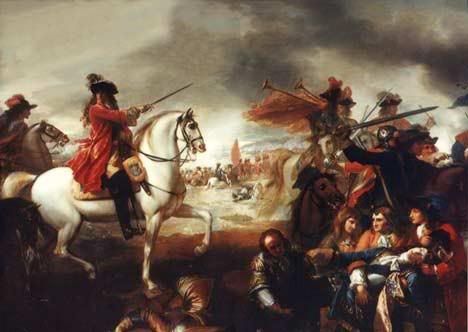
At the Battle of Gmund itself Neipigg asserted his tactical supremacy over his Catholic opponents and one a stinging victory. The Lutheran army was composed of one artillery battalion, around 2,000 men of the Vienna City Guard, perhaps 500 cavalrymen and a further 7,000 Protestant militia (recruited mainly from Vienna itself), meanwhile Gustav had around 12,000 trained, albeit tired and disgruntled, professional infantrymen. The Lutherans had perched themselves atop a small hill and had constructed small wooden fortifications around themselves. Without his artillery Gustav could not immediately break through the Lutheran defences without risking high casualties. Gustav decided to send out some of his men to gather wood from the surrounding area to construct ladders and tried to encircle the Lutherans. However Neipigg’s guns bombarded the Catholic army and prevented Gustav’s plan from coming to fruition. The battle then settled down for a couple of days in which the Catholics remained camped at the base of the hill (out of the range of the Lutheran cannons) and supplies continued to reach Neipigg’s host. However on the third day of this stalemate Gustav launched an assault on the Lutheran fortifications using his recently constructed siege ladders. The assault was a confused failure; Gustav’s army attacked without timing or conviction and was soon forced from the walls. Just as the Catholics withdrew Neipigg rode out at the head of his small cavalry contingent and began to ride down the Catholic army. Encouraged by what seemed to be a victory the Protestant infantry surged forth to join in the pursuit of the Catholics. Not realising when the day was lost Gustav rallied a large portion of his force around his own retinue. Neipigg was able to order his City Guardsmen (who were much more disciplined than the militia) to march around behind the location of Gustav’s rallying force. Neipigg delayed attacking Gustav directly until the Guardsmen were in place and then ordered the mass of militia to charge. The trapped between Guardsmen and militia both Gustav and his remaining army was utterly destroyed. Although perhaps ½ of the Catholic army survived the battle it was completely disbanded as the routing men fled to their fields.
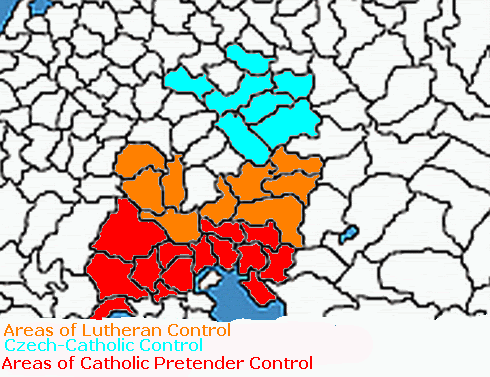
The news of the victory soon spread throughout Austria. Realising that the time for inaction was over Austria’s four remaining professional armies (each 8,000 infantrymen and 2 artillery battalions) quickly moved to take sides. The Army stationed in Wurttemberg went with Luther after its General emerged as a ‘closet’ Protestant, the 2 armies stationed in Lombardy rallied around Franz’s fiercely Catholic brother George von Habsburg, Duke of Styria. In the North the army stationed in Dresden lent itself to the movement for Czech independence – a faction strongly linked with Catholicism. The most serious threat to Luther, Franz and the revolution lay in the South with the charismatic pretender Georg and the vast Papist armies. As early as mid 1529 the battle lines had become firmly set.

It is noteworthy that despite the ongoing Civil War, a conflict in which the Lutherans looked likely to lose, Martin Luther quickly proceeded with his plans for reform. Legislation was passed from Vienna which forced the Catholic Church to kneel before the Emperor or face destruction. Unsurprisingly Pope and clergy refused the demands of Vienna and this gave Luther the opportunity to ransack Church properties in Austria to help fund the war effort. This move, although unpopular, helped to grant much needed funds to the Lutheran cause.
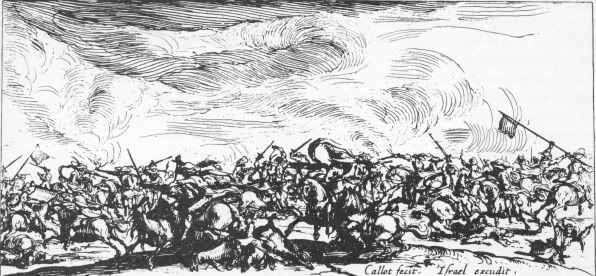
The next stage of the Austrian Civil War (1529-1531) resembled a conflict between separate states. Despite having a numerical advantage the Catholics under Georg were badly mauled by the Lutheran army of Neipigg. Unlike the Lutherans the Catholic armies never united together, the lethargy of their movements compared to the energetic forced marches of Neipigg allowed the Lutheran talisman to move from victory to victory defeating separate Catholic armies on the field.
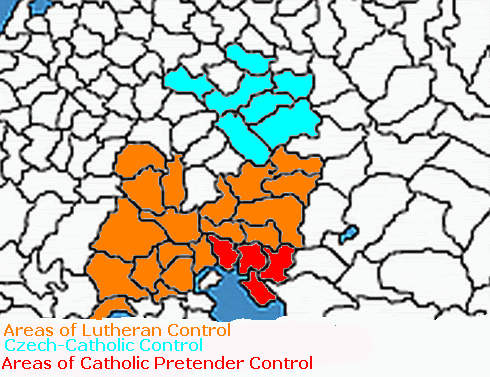
By August 1531 Neipigg’s campaign in the South had brought the Duchy of Lomabrdy alongside the invaluable city of Genoa (which was the centre of Austrian trade in the Atlantic) under the control of the Vienna government. However the Czech-Saxon Catholics of the North remained unmolested as neither Lutherans nor Northern Catholics moved against one another.
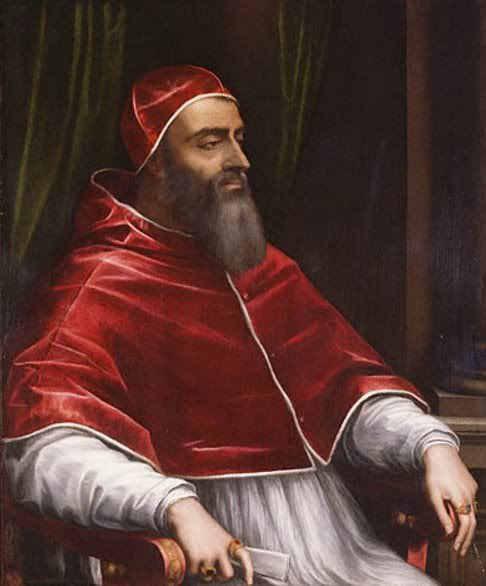
In Rome a new Pope was proclaimed in 1530 – Clement VII. Clement was a man of proven martial prowess, having led French armies to victory against large Protestant rebellions in Flanders and Burgundy. The College of Cardinals saw him as the latest last hope of saving mother Church from the rising power of the Reformation. The Papal States were still reeling from defeat to the Austrians in 1525 – the last war had destroyed much of the Papal army, ravished the Italian countryside and lost the Papacy the trading city of Genoa. However Clement was able to call upon many thousands of loyal Catholics to come to Italy and enlist in his armies whilst his personal fortune replenished the Papacy’s coffers. After less than a year he was ready to throw the weight of Italy and the Catholic world into the Austrian Civil War and on August 23rd 1531 he marched into Lombardy at the head of 40,000 men.
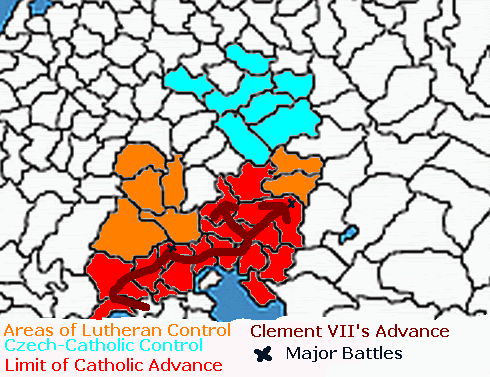
The immense power of the warrior Pope forced Neipigg to abandon his hard fought gains in Lombardy and flee to the Alpine defences of the Tyrol. Here he was pursued by Clement and in early 1532 the two Generals fought a decisive engagement. The Papal army was mauled and forced to abandon hopes of crossing the Alps but the invaluable Neipigg was killed in the midst of the charge against the Papal flank that eventually won the battle. Following the defeat Clement marched East to meet with the remnants of the Catholic armies of Georg, the Pretender. After wasting several vital months organising his new force (during which time Luther was able to raise a new army to defend Styria) Clement marched Northward into Austria proper. After an inconclusive battle at Graz the government army abandoned the Steiermark and pulled back to Vienna where Luther began to unite all the troops available to him. Meanwhile Clement made the mistake of assuming that the Lutherans were broken and sent in total ¼ of his army North-West to take Salzburg whilst he and Georg made their way towards Vienna. On June 5th 1533 Pope Clement VII, alongside Georg von Habsburg, led army of the Catholic world into battle against the last hope of the Lutheran faith at Wiener Neustadt (a town about 40 miles South of Vienna).
On the side of the Catholics the Pope led around 9,000 French, English and Spanish mercenaries, 5,000 Italian levies, 3,000 cavalrymen and 2 artillery battalions. Georg contributed a further 7,000 infantrymen and 4,000 cavalry men. In total the Catholics had around 21,000 infantrymen of varying quality, 7,000 cavalrymen and 2 battalions of artillery. Meanwhile the Lutherans had around 5,000 veteran soldiers, 11,000 fresh recruits, 5,000 cavalrymen and 5 battalions of artillery. In total the Lutherans had 16,000 infantry, 5,000 cavalry and 5 battalions of guns.
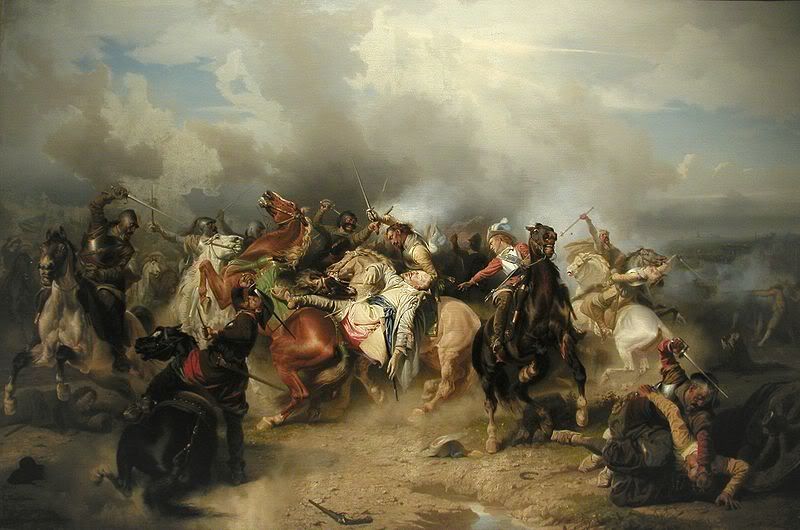
The battle began with the Catholics in the ascendency as Clement used his superior forces to good use by engaging the Lutheran infantry on a wide front. This also acted to lessen the advantage provided by the numerous Lutheran guns by keeping his troops close to those of the Protestants. However the battle was completely turned around by a serious of lucky breaks for the Lutherans. Firstly the Lutheran right flank (where the veteran troops were stationed) managed to force the Catholic infantry into retreat. The Pope responded to this by sending in most of his infantry. The Lutheran cavalry counter charged and was somehow able to force the larger Catholic cavalry force to rout. The brave Lutheran cavalry commander then led his horsemen forward behind the Catholic lines as he attempted to take the Catholic baggage train. The Protestant cavalry were considerably luckier than they could ever have hoped to be as they found themselves engaged with the Pope’s personal retinue, his holiness was killed in the fighting and the Pretender Georg von Habsburg was captured. Meanwhile, fearing the loss of their supplies to the Lutheran cavalry large portions of the Catholic army began to withdraw from combat to protect their baggage train. Without a leader to reorganise them the Catholic army quickly fell apart. As if God himself had intervened on the side of Luther’s revolution the army of Catholicism was broken, within a few weeks of Wiener Neustadt the Catholics were defeated in an attempt to take Salzburg and with that the Protestant counter surge began.
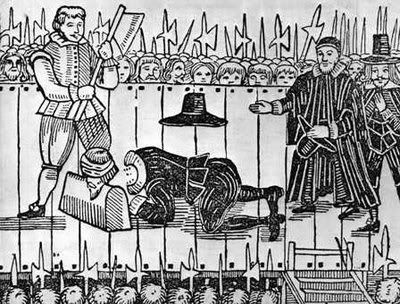
With the Catholic cause in the South falling apart Luther acted quickly and decisively to secure the throne for Franz as he had the Pretender Georg publically executed in Vienna. Without Georg the Catholics had no Habsburg to unite around and were thus divided. With the way to Rome now effectively open the armies of Martin Luther sprung forth from Vienna, at the same time Luther used the vast sums captured from the Pope’s baggage at Wiener Neustadt to pay an army of Polish mercenaries to bring Bohemia and Thuringia to heel, these mercenaries were in turn supported by the army of the Duchy of Brunswick (the Ossolinskite Duchy that recognised Franz as its ruler). From near disaster the situation quickly improved as by the end of 1534 the Northern Catholics were quelled and the Lutheran army had crossed over into Papal controlled Italy.
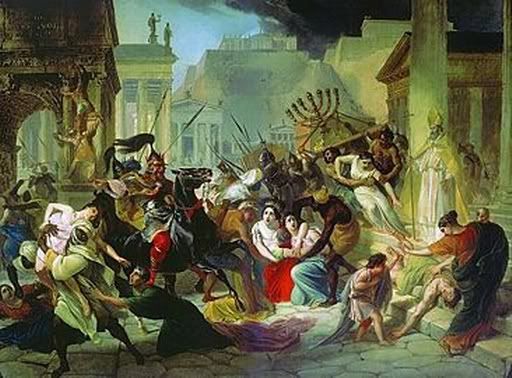
Although the Protestants started to meet major resistance once more after entering Italy they proceeded deeper into the Papal realm. In 1535 the exhausted Lutheran army sacked Rome – Luther praised the capture of the heart of the diseased Catholic Church as the triumph of the Reformation but in truth, could not afford to hold onto the city. Shortly after the sack of Rome the Papacy signed a peace treaty with the Lutheran government of Vienna.
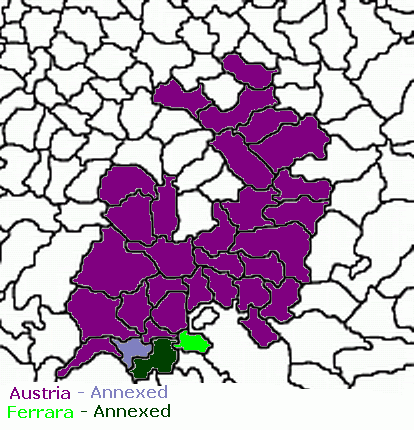
Luther wanted lasting peace on his Southern border. Parma was ceded directly to Austria whilst the Austrian vassal Duchy of Ferrara (a state whose vassal bounds had only recently been reinforced) gained a strip of land connecting its territory on the Adriatic with Ligurian Sea.

In 1536 Luther seized the opportunity to annex the wealthy port of Venice whose Republic had fallen on harsh times with its overseas Empire lost and its leaders excommunicated from the Catholic Church. The Lutheran government had always been short on funds since its creation as such the treasures of the city proved too tempting a prize to be left out of Austrian hands.
With the nation in a relative state of peace Luther took the opportunity to make official what had been the case since 1528 and had Franz convert to the Lutheran faith and make it the official religion of all the Habsburg realms. This move, despite seeming to many to be but a formality, was extremely unpopular with people of Luther’s Kingdom and provoked a continued stream of small revolts across the largely Catholic country.
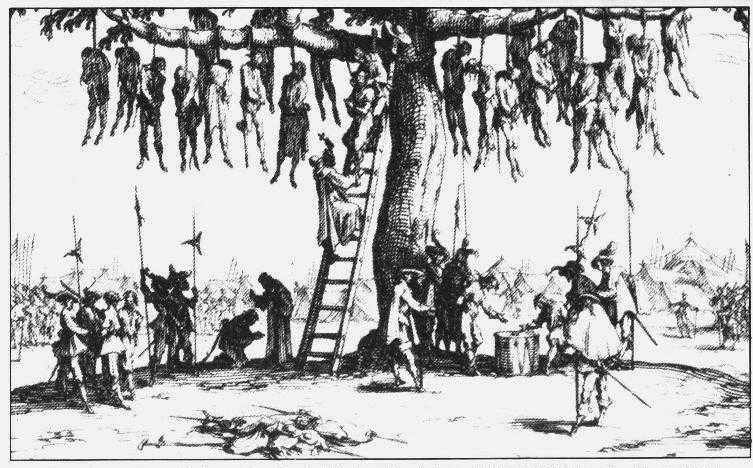
Ignoring popular opinion Luther surged on with his dream of the New Jerusalem and started to mould Austria into a Lutheran paradise in which God and man could dwell as one. In order to achieve this goal Luther had to do more than pass legislation like the Act of Uniformity and the Act of Advancement of Religion, he had to begin the purge of the deeply entrenched Catholic elements of Austrian society.
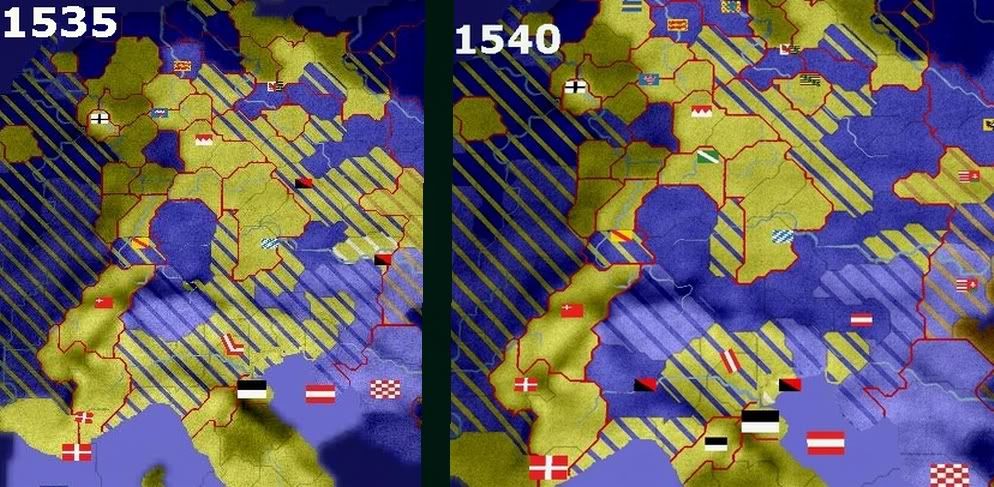
Although brutal Luther’s conversion campaign was extremely successful as within 5 years the Lutheran faith was had been made the largest in Austria. However as much as 20% of the entirety of the population of Franz’s realm was killed in the systematic campaign of religious terror. For most of Austria the choice was simply convert or face death.
The situation was simply too much to bear and in 1541 the last major action of the Catholics in the Austrian Civil War began when the people of mostly Catholic Lombardy rose up in revolt. The sheer scale of the revolt was worrying and after it was allowed to take hold it quickly spiralled out of control. One by one Austria’s armies marched to face the Lombards and one by one they marched home in defeat. By 1544 every single major city in Austrian Lombardy from Venice and Treviso to Milan and Genoa (with the exception of Brescia) were in rebel hands.
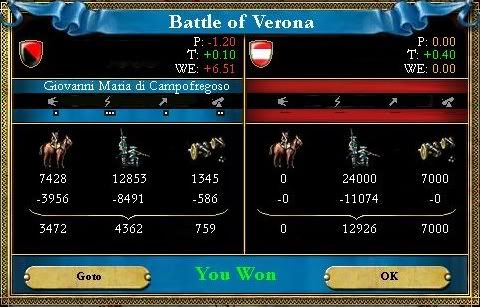
After assembling the armies of the Emperor for one last attack the Austrians won a bloody victory at Verona on April 3rd 1544. The last Lombard fortress (Milan) was not recaptured until January 1546.
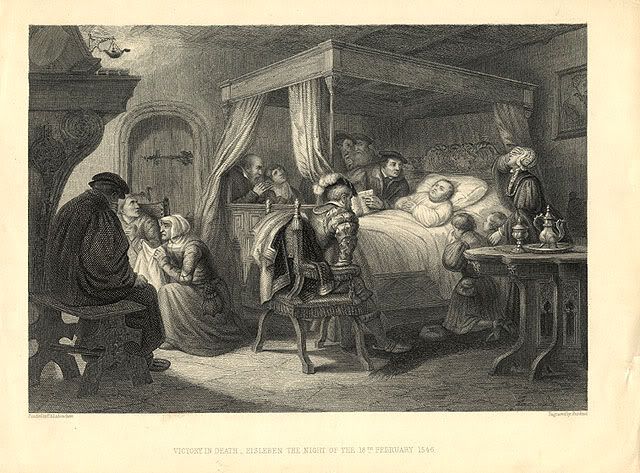
Shortly thereafter the bloated frame of one of history’s most important figures drew its last breath as Martin Luther, hero of the Reformation and conqueror of an Empire, died on February 18th 1546. Following the death of the incredible man the Lutheran government quickly descended into chaos as various successors vied for the power once held by Luther. Nether the less the inaction of Emperor Franz I allowed the Rule of the Saints to prolong its life by several years and prolong the torment of the Catholics of Austria.

When the Emperor finally died in 1550 his Lutheran son took over a Lutheran realm with a Lutheran aristocracy and Lutheran laws. The architect of the state inherited by Ernst II was had failed to create the idyllic Jerusalem he had dreamed of but he had managed to create a nation formed around his image that would continue to worship his memory for centuries to come.
Lived: 1496-1550
Head of House of Habsburg: 1518-1550
Holy Roman Emperor: 1518-1550
Archduke of Austria: 1518-1550
King of Bohemia: 1518-1550
Duke of Lombardy and Brunswick: 1518-1550
Duke of Thuringia: 1520-1550
Immediately after the Revolution in Vienna the powerful Austrian army seemed to be dumbstruck. For several weeks after the orders from Vienna (drafted by Luther signed by the Emperor) started to stream out to the nation’s Generals nothing happened. No General wished to make a move for or against the Revolution out of the fear of placing themselves on the losing side. That was until Gustav von Coburg, Count of Meissen and commander of the most powerful single Austrian army (12,000 infantry and 3 artillery battalions), declared the Lutheran government illegitimate, heretical and illegal. With his impressive host Gustav then left the city of Prague, the city from where he had based a recent campaign to calm the Czechs, and began a march on Vienna.
Even at this stage the Lutheran government’s actual power extended for barely a few miles outside of Vienna and as such the thought of the outnumbered and outclassed government sending an army to meet General Gustav on the field was unthinkable. But this is what Luther ordered. All but abandoning the seat of Imperial power a rag tag Lutheran army under the command of the former Captain of the Vienna City Guard, Dietrich Neipigg, was sent Northward to face Gustav’s Catholic army.
In the short few days prior to the battle of Gmund the Lutherans proved extremely fortunate. Firstly Neipigg was able to force march his army to Gmund, a small village at the Bohemian-Austrian border, and set his army up in a good defensive position with days to spare as Gustav’s larger force dragged its way across Bohemia. Secondly, and most importantly, Gustav committed tactical suicide when he unwittingly marched his army into a deep bog. Fearing Lutheran attacks whilst his army was trapped in the bog he abandoned his artillery and proceeded towards the field of battle.

At the Battle of Gmund itself Neipigg asserted his tactical supremacy over his Catholic opponents and one a stinging victory. The Lutheran army was composed of one artillery battalion, around 2,000 men of the Vienna City Guard, perhaps 500 cavalrymen and a further 7,000 Protestant militia (recruited mainly from Vienna itself), meanwhile Gustav had around 12,000 trained, albeit tired and disgruntled, professional infantrymen. The Lutherans had perched themselves atop a small hill and had constructed small wooden fortifications around themselves. Without his artillery Gustav could not immediately break through the Lutheran defences without risking high casualties. Gustav decided to send out some of his men to gather wood from the surrounding area to construct ladders and tried to encircle the Lutherans. However Neipigg’s guns bombarded the Catholic army and prevented Gustav’s plan from coming to fruition. The battle then settled down for a couple of days in which the Catholics remained camped at the base of the hill (out of the range of the Lutheran cannons) and supplies continued to reach Neipigg’s host. However on the third day of this stalemate Gustav launched an assault on the Lutheran fortifications using his recently constructed siege ladders. The assault was a confused failure; Gustav’s army attacked without timing or conviction and was soon forced from the walls. Just as the Catholics withdrew Neipigg rode out at the head of his small cavalry contingent and began to ride down the Catholic army. Encouraged by what seemed to be a victory the Protestant infantry surged forth to join in the pursuit of the Catholics. Not realising when the day was lost Gustav rallied a large portion of his force around his own retinue. Neipigg was able to order his City Guardsmen (who were much more disciplined than the militia) to march around behind the location of Gustav’s rallying force. Neipigg delayed attacking Gustav directly until the Guardsmen were in place and then ordered the mass of militia to charge. The trapped between Guardsmen and militia both Gustav and his remaining army was utterly destroyed. Although perhaps ½ of the Catholic army survived the battle it was completely disbanded as the routing men fled to their fields.

The news of the victory soon spread throughout Austria. Realising that the time for inaction was over Austria’s four remaining professional armies (each 8,000 infantrymen and 2 artillery battalions) quickly moved to take sides. The Army stationed in Wurttemberg went with Luther after its General emerged as a ‘closet’ Protestant, the 2 armies stationed in Lombardy rallied around Franz’s fiercely Catholic brother George von Habsburg, Duke of Styria. In the North the army stationed in Dresden lent itself to the movement for Czech independence – a faction strongly linked with Catholicism. The most serious threat to Luther, Franz and the revolution lay in the South with the charismatic pretender Georg and the vast Papist armies. As early as mid 1529 the battle lines had become firmly set.

It is noteworthy that despite the ongoing Civil War, a conflict in which the Lutherans looked likely to lose, Martin Luther quickly proceeded with his plans for reform. Legislation was passed from Vienna which forced the Catholic Church to kneel before the Emperor or face destruction. Unsurprisingly Pope and clergy refused the demands of Vienna and this gave Luther the opportunity to ransack Church properties in Austria to help fund the war effort. This move, although unpopular, helped to grant much needed funds to the Lutheran cause.

The next stage of the Austrian Civil War (1529-1531) resembled a conflict between separate states. Despite having a numerical advantage the Catholics under Georg were badly mauled by the Lutheran army of Neipigg. Unlike the Lutherans the Catholic armies never united together, the lethargy of their movements compared to the energetic forced marches of Neipigg allowed the Lutheran talisman to move from victory to victory defeating separate Catholic armies on the field.

By August 1531 Neipigg’s campaign in the South had brought the Duchy of Lomabrdy alongside the invaluable city of Genoa (which was the centre of Austrian trade in the Atlantic) under the control of the Vienna government. However the Czech-Saxon Catholics of the North remained unmolested as neither Lutherans nor Northern Catholics moved against one another.

In Rome a new Pope was proclaimed in 1530 – Clement VII. Clement was a man of proven martial prowess, having led French armies to victory against large Protestant rebellions in Flanders and Burgundy. The College of Cardinals saw him as the latest last hope of saving mother Church from the rising power of the Reformation. The Papal States were still reeling from defeat to the Austrians in 1525 – the last war had destroyed much of the Papal army, ravished the Italian countryside and lost the Papacy the trading city of Genoa. However Clement was able to call upon many thousands of loyal Catholics to come to Italy and enlist in his armies whilst his personal fortune replenished the Papacy’s coffers. After less than a year he was ready to throw the weight of Italy and the Catholic world into the Austrian Civil War and on August 23rd 1531 he marched into Lombardy at the head of 40,000 men.

The immense power of the warrior Pope forced Neipigg to abandon his hard fought gains in Lombardy and flee to the Alpine defences of the Tyrol. Here he was pursued by Clement and in early 1532 the two Generals fought a decisive engagement. The Papal army was mauled and forced to abandon hopes of crossing the Alps but the invaluable Neipigg was killed in the midst of the charge against the Papal flank that eventually won the battle. Following the defeat Clement marched East to meet with the remnants of the Catholic armies of Georg, the Pretender. After wasting several vital months organising his new force (during which time Luther was able to raise a new army to defend Styria) Clement marched Northward into Austria proper. After an inconclusive battle at Graz the government army abandoned the Steiermark and pulled back to Vienna where Luther began to unite all the troops available to him. Meanwhile Clement made the mistake of assuming that the Lutherans were broken and sent in total ¼ of his army North-West to take Salzburg whilst he and Georg made their way towards Vienna. On June 5th 1533 Pope Clement VII, alongside Georg von Habsburg, led army of the Catholic world into battle against the last hope of the Lutheran faith at Wiener Neustadt (a town about 40 miles South of Vienna).
On the side of the Catholics the Pope led around 9,000 French, English and Spanish mercenaries, 5,000 Italian levies, 3,000 cavalrymen and 2 artillery battalions. Georg contributed a further 7,000 infantrymen and 4,000 cavalry men. In total the Catholics had around 21,000 infantrymen of varying quality, 7,000 cavalrymen and 2 battalions of artillery. Meanwhile the Lutherans had around 5,000 veteran soldiers, 11,000 fresh recruits, 5,000 cavalrymen and 5 battalions of artillery. In total the Lutherans had 16,000 infantry, 5,000 cavalry and 5 battalions of guns.

The battle began with the Catholics in the ascendency as Clement used his superior forces to good use by engaging the Lutheran infantry on a wide front. This also acted to lessen the advantage provided by the numerous Lutheran guns by keeping his troops close to those of the Protestants. However the battle was completely turned around by a serious of lucky breaks for the Lutherans. Firstly the Lutheran right flank (where the veteran troops were stationed) managed to force the Catholic infantry into retreat. The Pope responded to this by sending in most of his infantry. The Lutheran cavalry counter charged and was somehow able to force the larger Catholic cavalry force to rout. The brave Lutheran cavalry commander then led his horsemen forward behind the Catholic lines as he attempted to take the Catholic baggage train. The Protestant cavalry were considerably luckier than they could ever have hoped to be as they found themselves engaged with the Pope’s personal retinue, his holiness was killed in the fighting and the Pretender Georg von Habsburg was captured. Meanwhile, fearing the loss of their supplies to the Lutheran cavalry large portions of the Catholic army began to withdraw from combat to protect their baggage train. Without a leader to reorganise them the Catholic army quickly fell apart. As if God himself had intervened on the side of Luther’s revolution the army of Catholicism was broken, within a few weeks of Wiener Neustadt the Catholics were defeated in an attempt to take Salzburg and with that the Protestant counter surge began.

With the Catholic cause in the South falling apart Luther acted quickly and decisively to secure the throne for Franz as he had the Pretender Georg publically executed in Vienna. Without Georg the Catholics had no Habsburg to unite around and were thus divided. With the way to Rome now effectively open the armies of Martin Luther sprung forth from Vienna, at the same time Luther used the vast sums captured from the Pope’s baggage at Wiener Neustadt to pay an army of Polish mercenaries to bring Bohemia and Thuringia to heel, these mercenaries were in turn supported by the army of the Duchy of Brunswick (the Ossolinskite Duchy that recognised Franz as its ruler). From near disaster the situation quickly improved as by the end of 1534 the Northern Catholics were quelled and the Lutheran army had crossed over into Papal controlled Italy.

Although the Protestants started to meet major resistance once more after entering Italy they proceeded deeper into the Papal realm. In 1535 the exhausted Lutheran army sacked Rome – Luther praised the capture of the heart of the diseased Catholic Church as the triumph of the Reformation but in truth, could not afford to hold onto the city. Shortly after the sack of Rome the Papacy signed a peace treaty with the Lutheran government of Vienna.

Luther wanted lasting peace on his Southern border. Parma was ceded directly to Austria whilst the Austrian vassal Duchy of Ferrara (a state whose vassal bounds had only recently been reinforced) gained a strip of land connecting its territory on the Adriatic with Ligurian Sea.

In 1536 Luther seized the opportunity to annex the wealthy port of Venice whose Republic had fallen on harsh times with its overseas Empire lost and its leaders excommunicated from the Catholic Church. The Lutheran government had always been short on funds since its creation as such the treasures of the city proved too tempting a prize to be left out of Austrian hands.
With the nation in a relative state of peace Luther took the opportunity to make official what had been the case since 1528 and had Franz convert to the Lutheran faith and make it the official religion of all the Habsburg realms. This move, despite seeming to many to be but a formality, was extremely unpopular with people of Luther’s Kingdom and provoked a continued stream of small revolts across the largely Catholic country.

Ignoring popular opinion Luther surged on with his dream of the New Jerusalem and started to mould Austria into a Lutheran paradise in which God and man could dwell as one. In order to achieve this goal Luther had to do more than pass legislation like the Act of Uniformity and the Act of Advancement of Religion, he had to begin the purge of the deeply entrenched Catholic elements of Austrian society.

Although brutal Luther’s conversion campaign was extremely successful as within 5 years the Lutheran faith was had been made the largest in Austria. However as much as 20% of the entirety of the population of Franz’s realm was killed in the systematic campaign of religious terror. For most of Austria the choice was simply convert or face death.
The situation was simply too much to bear and in 1541 the last major action of the Catholics in the Austrian Civil War began when the people of mostly Catholic Lombardy rose up in revolt. The sheer scale of the revolt was worrying and after it was allowed to take hold it quickly spiralled out of control. One by one Austria’s armies marched to face the Lombards and one by one they marched home in defeat. By 1544 every single major city in Austrian Lombardy from Venice and Treviso to Milan and Genoa (with the exception of Brescia) were in rebel hands.

After assembling the armies of the Emperor for one last attack the Austrians won a bloody victory at Verona on April 3rd 1544. The last Lombard fortress (Milan) was not recaptured until January 1546.

Shortly thereafter the bloated frame of one of history’s most important figures drew its last breath as Martin Luther, hero of the Reformation and conqueror of an Empire, died on February 18th 1546. Following the death of the incredible man the Lutheran government quickly descended into chaos as various successors vied for the power once held by Luther. Nether the less the inaction of Emperor Franz I allowed the Rule of the Saints to prolong its life by several years and prolong the torment of the Catholics of Austria.

When the Emperor finally died in 1550 his Lutheran son took over a Lutheran realm with a Lutheran aristocracy and Lutheran laws. The architect of the state inherited by Ernst II was had failed to create the idyllic Jerusalem he had dreamed of but he had managed to create a nation formed around his image that would continue to worship his memory for centuries to come.
That civil war must have been tough. Congratulations on your victory.  I can't wait to see where a Protestant Austria goes from here.
I can't wait to see where a Protestant Austria goes from here.
That civil war must have been tough. Congratulations on your victory.I can't wait to see where a Protestant Austria goes from here.
Whilst I obviously embellished alot of this I did actually come close to defeat. During the war with the Pope they did actually get as far as Steiermark before I destroyed the Papal army. The Lombard revolt menwhile saw around 1/2 of my units totally destroyed, I dodn't win a single battle before Verona.
Also could I point people in the direction my new AAR The Rule of the Saints (link in the sig). It is a narrative tale based on the events recently seen in this AAR.
EDIT: You'll all be pleased to know that I'm currently being cluster f*cked in game by a massive coalition of Catholic states led by the Pope. This is also a world wide conflict - sort of like a mix between the 30 years war and the seven years war. Its just started but I'm outnumbered on land and sea and I'm being attacked from every direction
Last edited:

